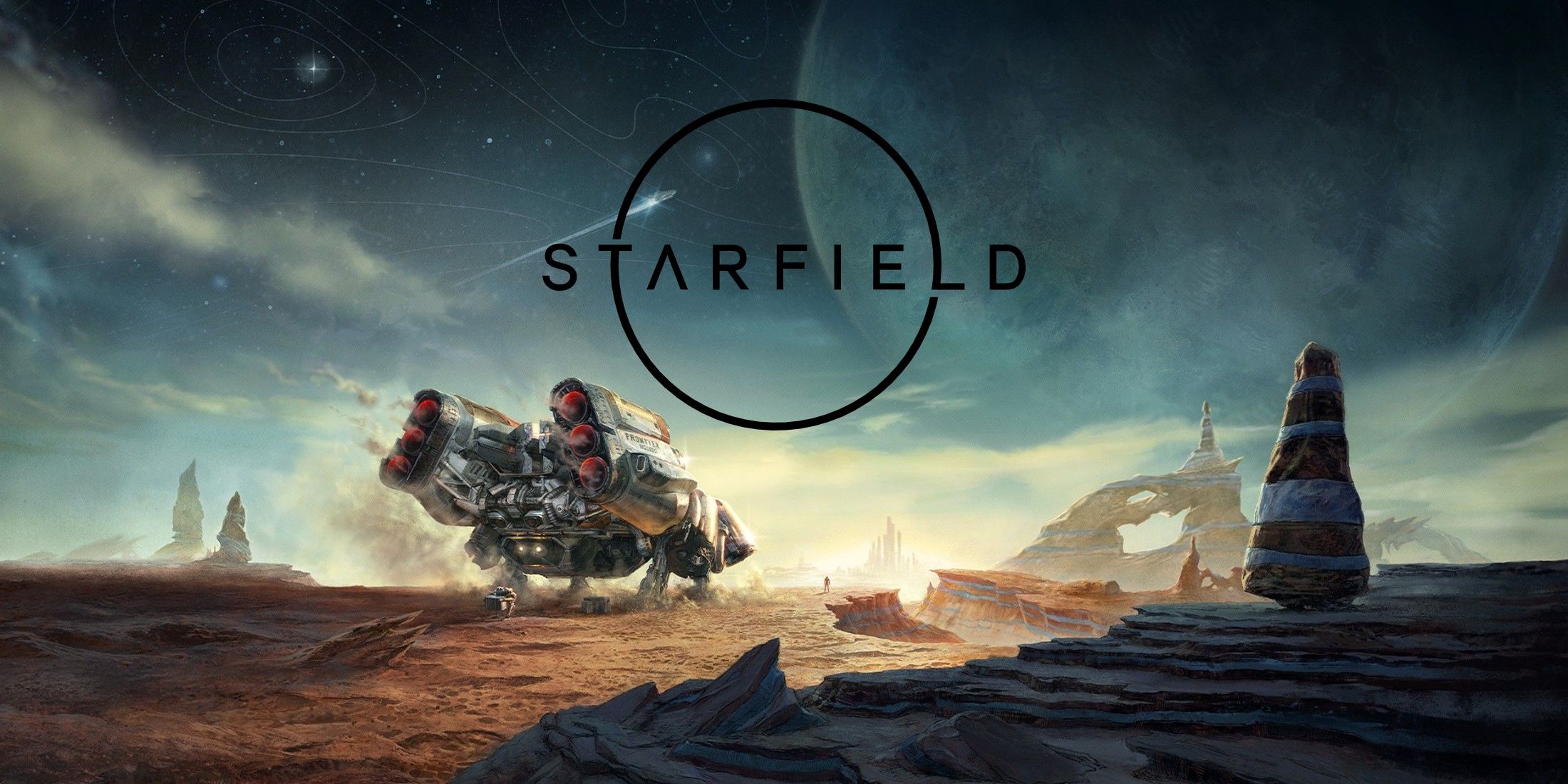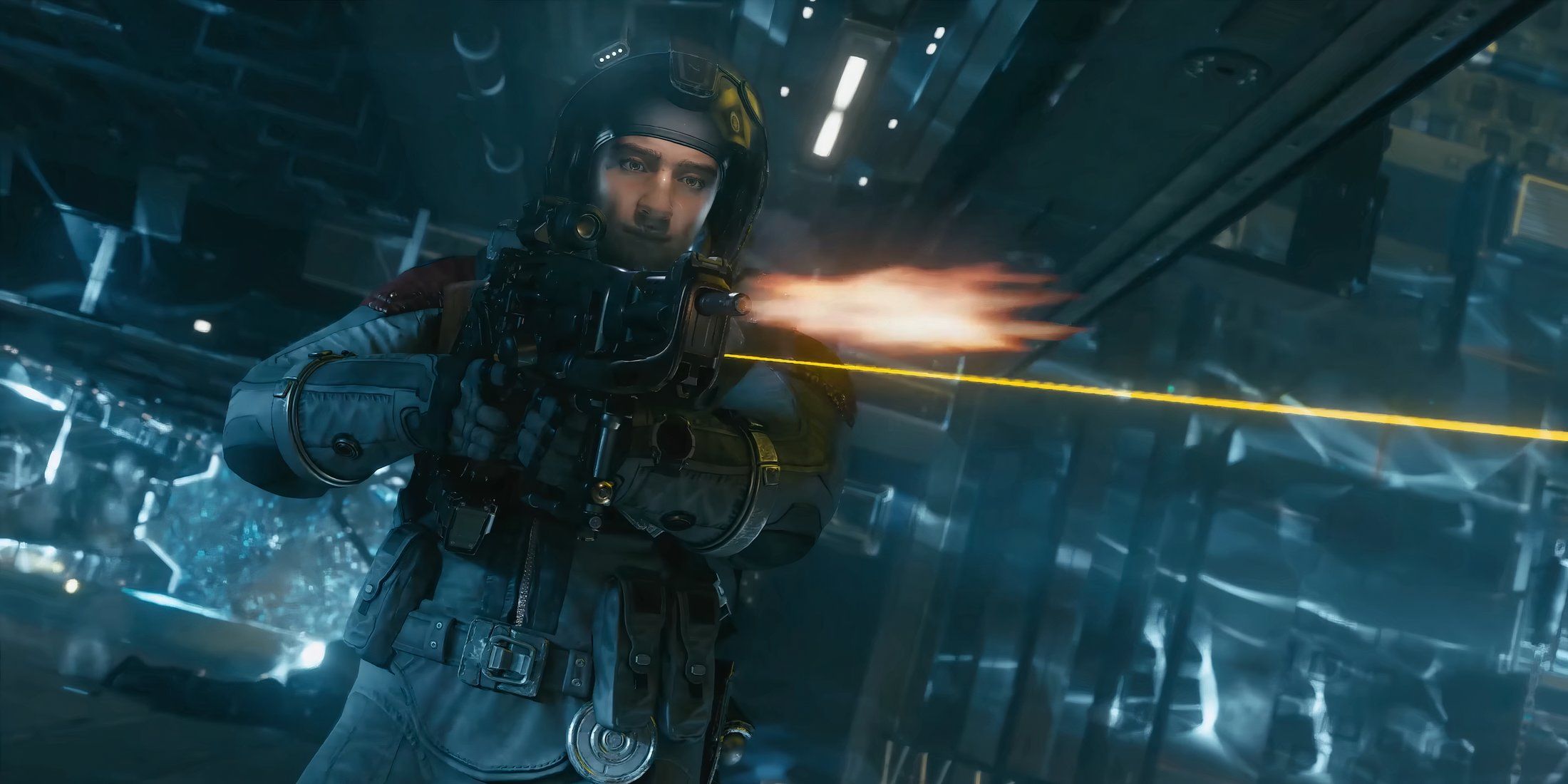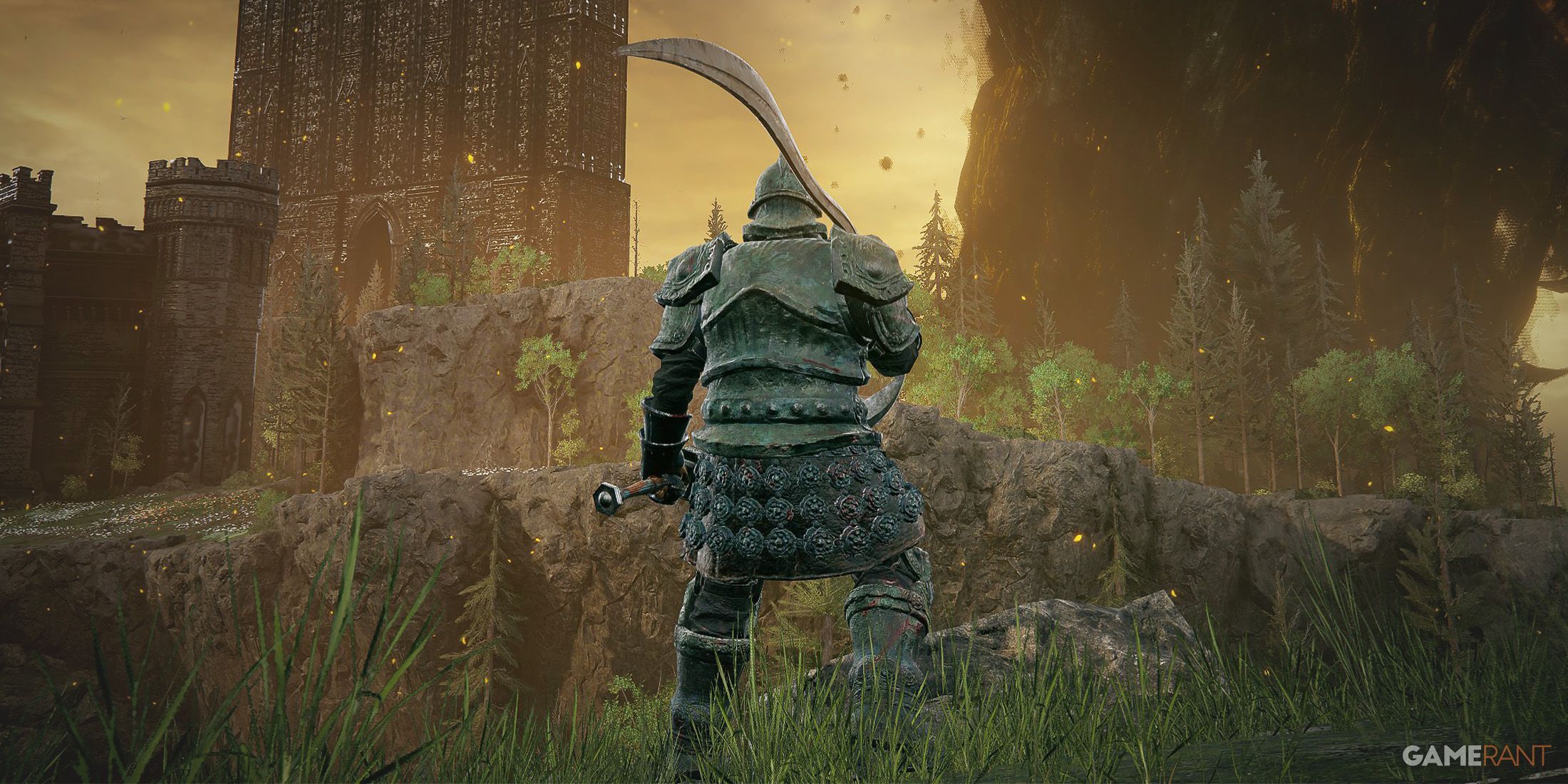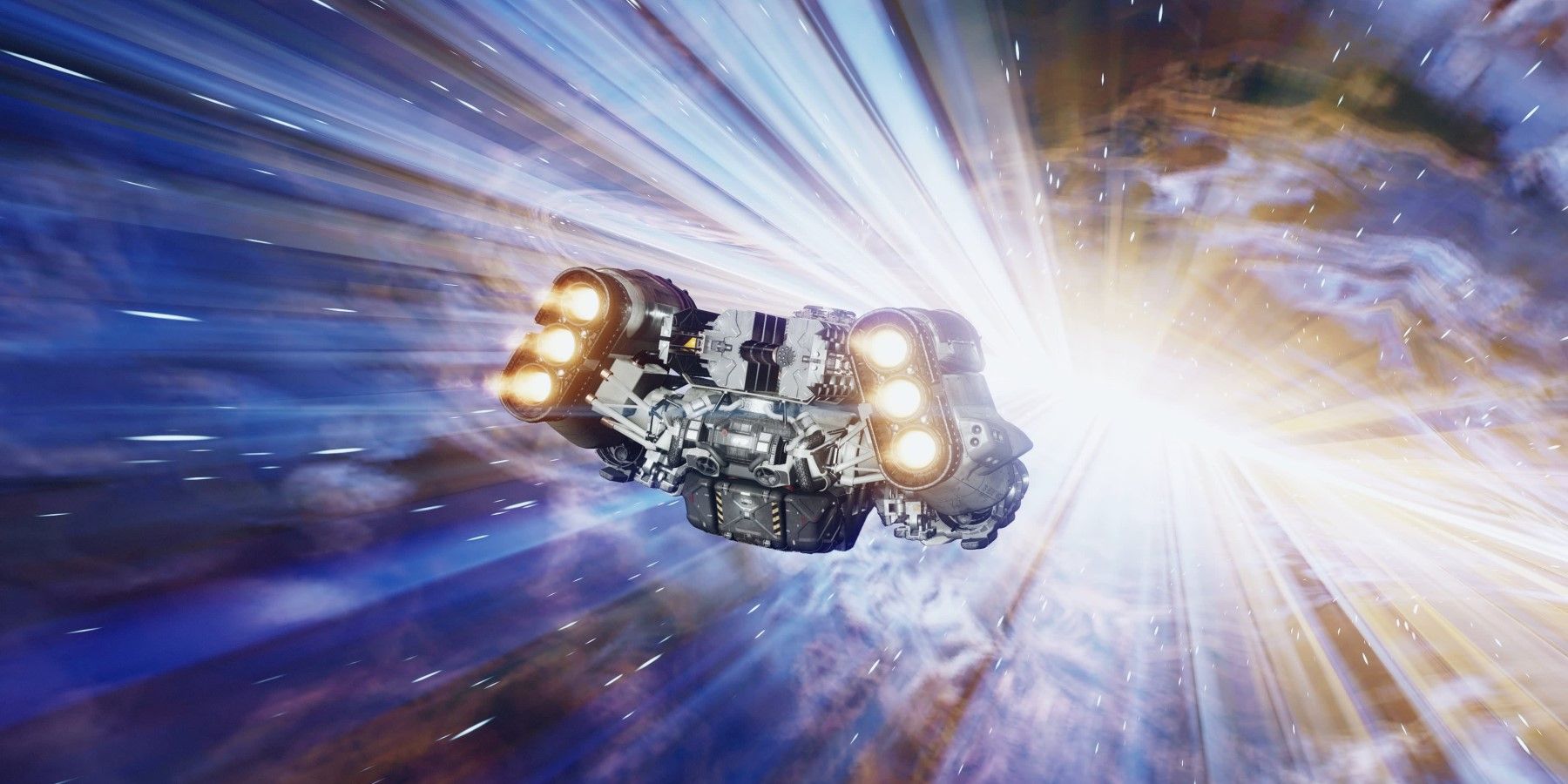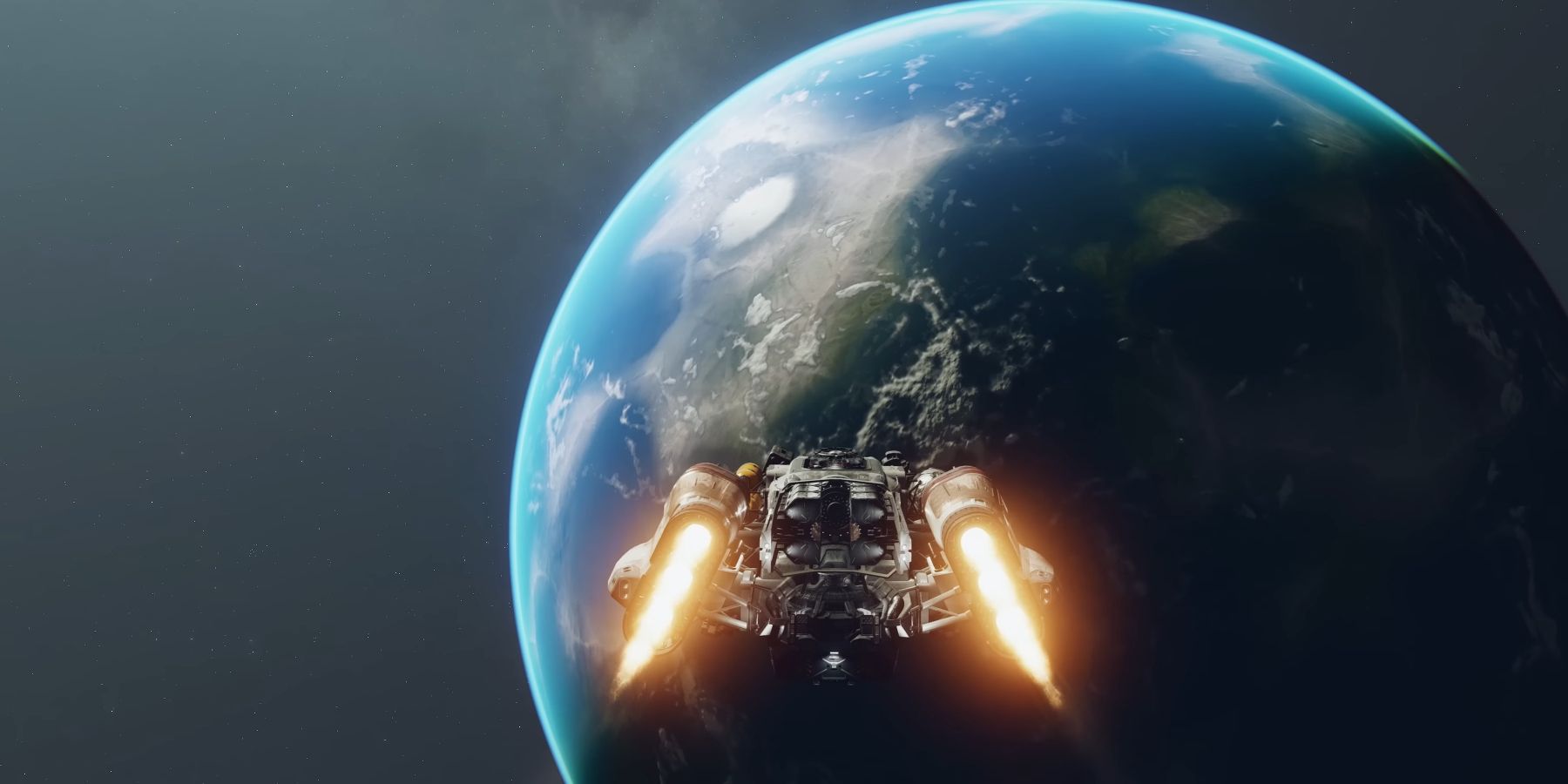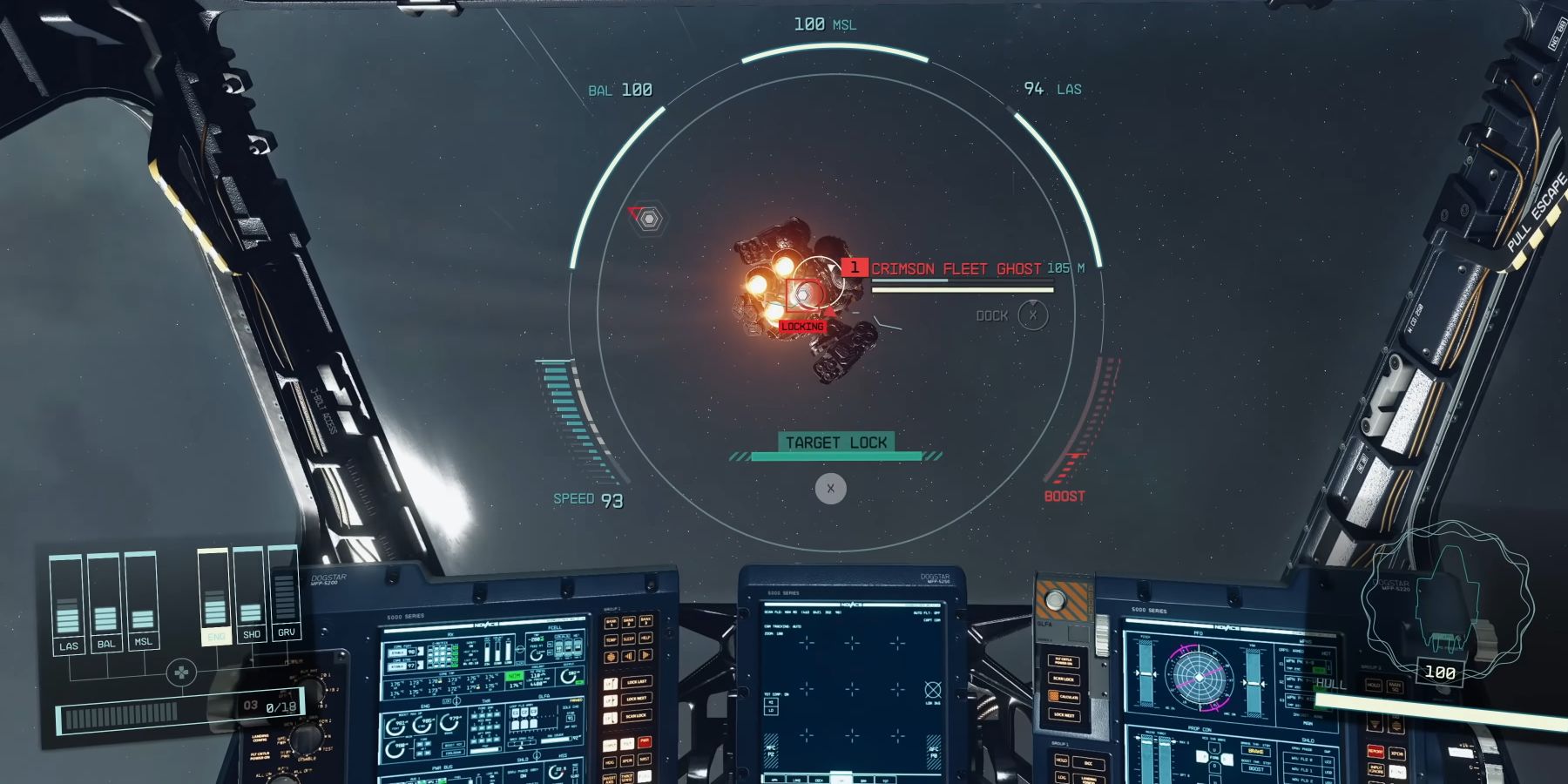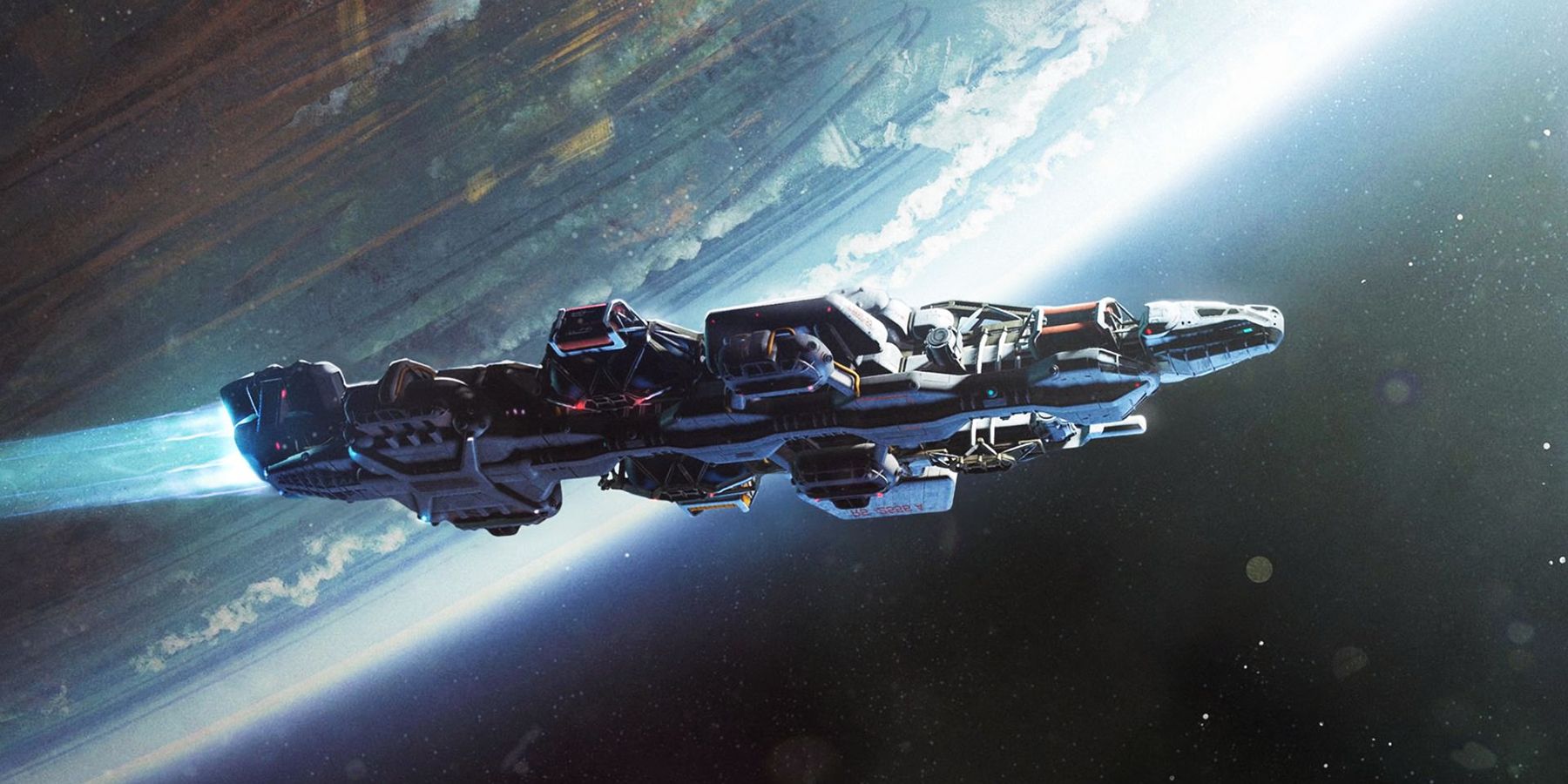Still months away from its scheduled gameplay deep dive, there are many questions surrounding Bethesda's upcoming sci-fi epic Starfield. It is the studio's first new-gen, open-world RPG in many years, promising hundreds of explorable planets, and what's perhaps even more exciting is that players can travel between those worlds by piloting ships in real-time. Spaceflight is one of Starfield's big ticket items, although it's unknown how well the feature will mix with Bethesda's usual on-foot exploration.
Furthermore, developers have said that Starfield has a "NASA-Punk" quality, a term that's meant to encapsulate the title's roots in actual space programs and practical technologies. Set in the 24th century, game director Todd Howard has said that interstellar travel is still dangerous in Bethesda's version of the future, which is a hook that could ground Starfield as a much more daring, unique adventure. Yet, these hard sci-fi elements hold a risk of creating friction between storytelling and intuitive gameplay, especially in regard to space combat.
Starfield's Flight Mechanics Shouldn't Be a Barrier For Players
Howard himself has acknowledged the team is trying to balance the tone of Starfield with approachable systems that aren't too frustrating. One example he's described is fuel, as it was originally an essential resource but now limits travel distance instead. Decisions like these are probably made to prevent repetitive or otherwise taxing sequences that force players to stop, refill, and continue on - all just to fly around. Being stranded in space might make for an interesting encounter once or twice, but it can certainly bring the action to a screeching halt for those merely trying to get along on their quests in Starfield.
While Bethesda appears to be creating a role-playing game inspired by classic space sim games like Wing Commander, it will be carving out its own niche as well. The team is renowned for its experience developing open-world sandboxes, letting gamers loose to create the characters they want and wander freely. What could complicate this is the six degrees of freedom that Starfield's ships would have in zero-G, and without proper guidance, it may become difficult to orient oneself. Additionally, the vacuum of space is frictionless, meaning that real-life rocket propulsion is something that retains both direction and speed relative to the vehicle's orbit.
Simulating that free-flowing momentum has the potential to be exhilarating, though it's unlikely that Starfield will have proper orbital mechanics. Those kinds of physics simulations are not only technically demanding, but they also give players a learning curve that demands them to rethink the rules of motion. As an example, Kerbal Space Program is a rocket-building simulation game that focuses entirely on the difficulty of orbital maneuvering and aerodynamics. For some, there's a thrill in executing efficient, physics-based missions, but Starfield inhabits a different genre - player freedom should come before realism in an RPG.
How Starfield Could Balance Space Sim and RPG Elements
Immersion has been a vital component of all the developer's past games, and even if realism would be more trouble than it's worth, a believable sci-fi setting is still possible. From what is known thus far, a combination of RPG and space sim elements is what apparently sets Starfield apart from prior releases. On that note, other space sims are often made enjoyable by the amount of control they give players. Whether guided in part by auto-targeting or explosive bursts of speed, sci-fi games have often leveraged technology to overcome the limits of physics. With Starfield, the function and feedback of starships might be designed to make its combat feel calculated.
Based on initial gameplay, Starfield could lean further into the weighty feel of its industrial ships, and that may let gamers find their own playstyle through a few manual adjustments. Spaceship customization is a major feature that has been advertised, being a modular way to tune the capabilities of players' pilotable vessels. Also, it appears that when flying the ship, players can redirect power to different ship subsystems like shields and engines. At least from the perspective of the cockpit, it seems that those quick tactical options might give Starfield a similar blend of FPS and RPG combat from Bethesda's Fallout games.
Detailed, in-depth ship interactions are just another layer that shows promise, especially for anyone who is excited about Starfield's hard sci-fi themes. Regardless, it's probably best that science acts as a narrative anchor rather than a full-fledged simulation. Managing role-playing systems, ship customization, and interplanetary battles are a lot to ask of players, much less Bethesda. The developer will undoubtedly have to carefully balance this combination of features, so if these themes can influence the tone or pacing of Starfield, then its trademark game design should be able to return relatively unscathed.
Bethesda Can Succeed With Immersive Space Combat
Past developer interviews indicate the team is putting effort into the consistency of its fiction, and Starfield doesn't have to be bound strictly to real-world science to be entertaining. After all, faster-than-light travel has long been confirmed, so it isn't like Bethesda is avoiding any fun twists. Instead, the futuristic setting can provide impactful space combat using bulky, tank-like ships that are responsive to control. Really, ships should be approachable in ways similar to its on-foot, first-person shooting, but it's an additional level of immersion that should be polished by the time Starfield hits its release date.
Many fans of Bethesda's single-player games were left waiting for more following the release of Fallout 76. Other than its troubled online launch, much of the game's mechanics were still derived from Fallout 4, so it didn't feel entirely new in that respect. Now, several years later, the studio is finally presenting some long-overdue innovations by integrating vehicular space combat among other larger, procedural systems. Hopefully, Starfield will manage to bring that immersive gameplay back on a larger scale, as it is already one of gaming's most exciting new RPGs. Skyrim popularized the studio's open-world formula in 2011, so Starfield might be the next step in evolving that design philosophy with greater depth.
Starfield launches September 6 for PC and Xbox Series X/S.

